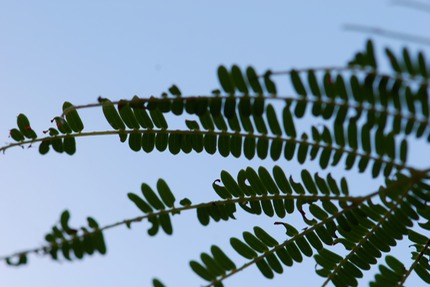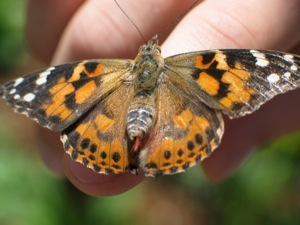One of the best ways to introduce children to the world of insects is to let them observe butterflies, moths and their caterpillars in the wild. These insects are all around us, even in the urban centers, and sometimes it just takes a bit of luck to spot one.
Six Tips for a Successful Caterpillar Hunt
Have you ever taken your children on a hunt for caterpillars? It is a lot of fun when you see their faces light up and hear their squeals of delight when they find one.
Here are some ways to increase the chances for finding caterpillars in nature:
1. Find out when caterpillars might be found in your area.
Get to know the life cycles of some local butterflies and moths by searching the internet, reading books and checking with local experts. For example, in Arizona our caterpillars are most numerous now (August) through the fall. They feed on the plants that grow after the summer rains.
2. Find out where to look for them.
Learn the host plants of some common butterflies and moths in your region. We know to look for queen butterfly caterpillars on our milkweed plants, giant swallowtail on the new foliage of citrus trees, and rustic sphinx on the desert willow. This is simply a case of time and experience, so learn a few at a time.

3. Look for holes in leaves and missing plant parts.
If you remember that caterpillars have chewing mouthparts and eat plants, you already have a clue. Look for plants that have been chewed on. Sometimes the holes are large, like in the leaf above…
… and sometimes the holes are smaller, because the caterpillars are smaller. If you see holes, gently flip the leaf over. The caterpillar may be hiding on the underside or a nearby stem.
4. Look for other clues a caterpillar is nearby.
See those black things on the leaf above that look like pepper? Those are the caterpillar droppings, which entomologists call frass.
5. Bring a hand lens or magnifying glass.
If you look very closely, you might also find butterfly or moth eggs.
6. Look for silk.
Spiders aren’t the only ones who make silk, so do many caterpillars. They may use the silk to build retreats out of leaves, causing the leaf or flower petal to roll up. They also use silk to make trails to walk around. Moth caterpillars use their silk to make a cocoon to pupate in. If you see a rolled up leaf that has wisps of silk around it, peek inside to see who is at home.
To increase your chances of seeing butterflies and moths, you can do the following:
- • make a feeder or put out fruit to attract butterflies
- •plant a butterfly garden
- •visit an insect zoo or butterfly garden*

Although no one should touch a butterfly because it knocks the scales off their wings and can spread diseases (to the butterfly, not you), it is not unusual to have one land on someone when visiting a butterfly pavilion.
If you do spot a caterpillar, butterfly or moth, here are some questions you can keep in mind to start a discussion:
1. What color is it?
2. Is it the same color on both sides?
3. Does it have eyes?
4. Do you think it is a butterfly or moth? Older children might know some of the characteristics, such as that butterflies are often more colorful, fly during the day, and have thin antennae.
5. What is it doing? (feeding, flying, resting on a leaf, basking in the sun, etc.)
6. You can ask older children if they know what kind it is, particularly if they have been studying the different kinds.
*List of Butterfly Gardens and Insect Zoos around the world.


